If you’ve ever tried to clean off glue from a leather car seat, you know how important it is to find the right solution. It’s incredibly frustrating when you can’t get rid of the sticky residue and it seems like no matter what product or method you use, nothing works. But fear not! With the right approach, glue removal from leather car seats doesn’t have to be a daunting task. In this article, we’ll be exploring all the different ways that you can finally get rid of that glue for good. So if you’re ready to say goodbye to sticky leather seats forever, let’s get started!
What You’ll Need
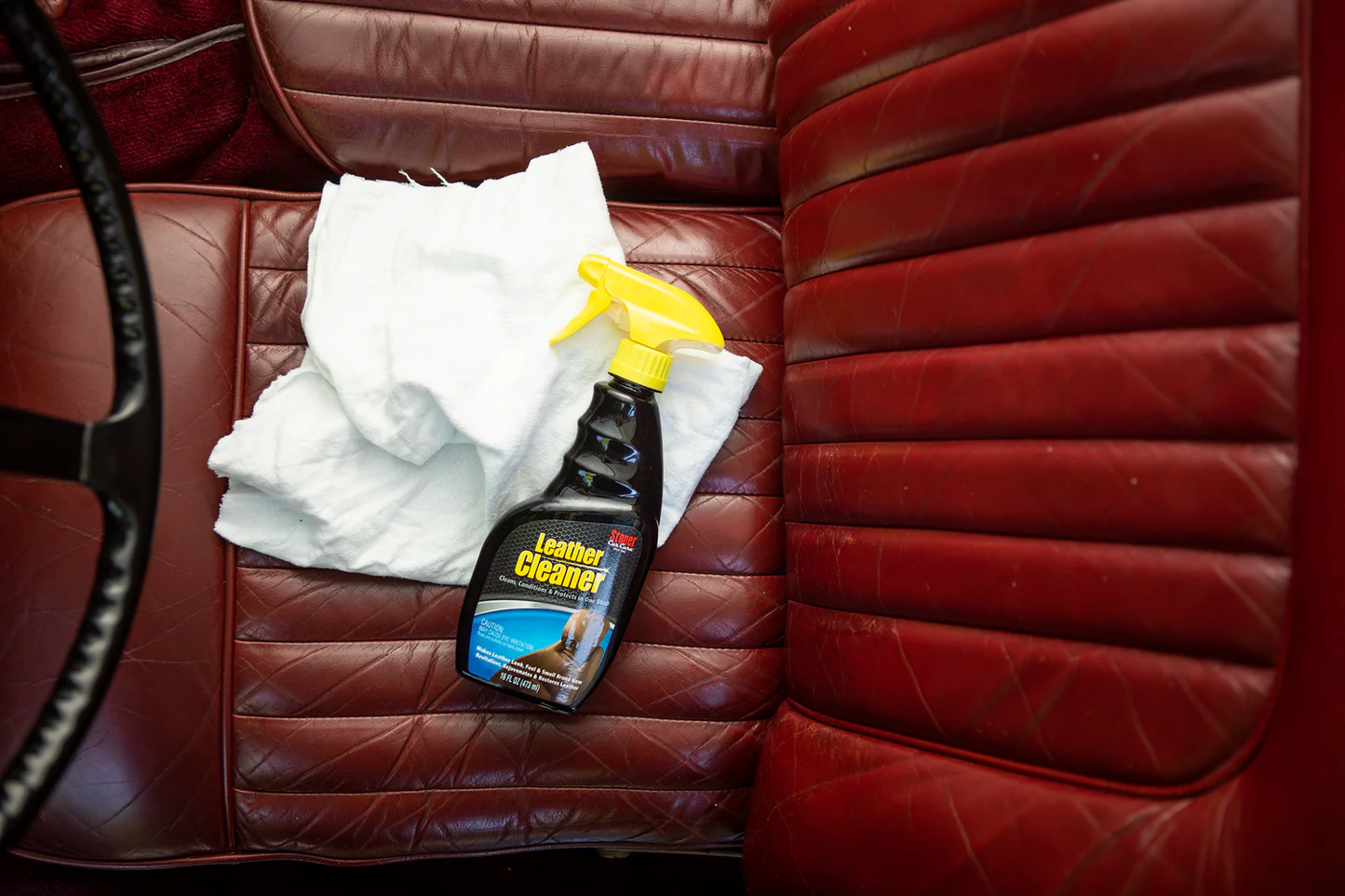
Before you can start your glue removal process, you’ll need to make sure you have the right materials. Here are a few essentials:
- Leather cleaner and conditioner
- Soft cloths or sponges
- White vinegar
- Lemon juice (optional)
- Rubbing alcohol
- A bowl
- Plastic wrap (optional)
Once you’ve gathered all of these items, you’re ready to begin tackling that sticky glue! Let’s go over the various methods for removing it from leather car seats.
1. Peel Glue from Leather Car Seat
The first step is to try and peel the glue off by hand. If you have a few loose pieces of glue stuck to your leather seat, grab them with your fingers and slowly work them away from the surface. This can be a tricky process, as too much force may cause damage to the leather. Make sure to take it slow and take extra precaution. Once you’ve successfully removed the bulk of adhesive, a soft cloth moistened with warm water and leather cleaner can help eliminate any remains. [1]
2. Scrape Off Remaining Glue
If you have stubborn pieces of glue stuck to the leather seat, it may be necessary to use a scraping tool. Make sure that you are using a gentle scraping tool, such as a plastic card or butter knife, and work slowly in order to avoid damaging the leather. Once again, if you find any residue remaining after scraping the glue off, use a cloth dampened with warm water and leather cleaner to wipe away any remaining bits.
3. Select & Use a Cleaning Method for The Leftover Glue
Now that you’ve identified the type of glue used, it’s time to select a suitable cleaning method. Depending on the type of adhesive you are dealing with, there are several ways to remove leftover glue from surfaces. Here are some popular options:
- Isopropyl alcohol: This is one of the most popular methods for removing glue residues and is considered very safe since it evaporates quickly without leaving any residue behind. Simply dampen a cloth in isopropyl alcohol and rub gently over the affected area until all traces of glue are gone.
- Acetone: This is another effective cleaning agent that can be used to remove adhesives. However, take caution when using this product as it can damage certain surfaces.
- Dish soap: This is a milder option for removing glue residue, but it may take several rounds of scrubbing and rinsing to completely remove all traces of glue.
- Goo Gone: Finally, you can use a commercial product like Goo Gone for tough sticky messes. Follow the instructions on the packaging to ensure optimal results. [2]
Regular Option: Leather Cleaner
Once you’ve managed to remove all of the glue, it’s important to follow up with a leather cleaner and conditioner. This will help to restore your car seat’s original color and shine, and also ensure that no residual glue is left behind.
It’s always best practice to use a good quality leather cleaner and conditioner when cleaning any leather surface. Make sure that you are following the instructions on the bottle in order to get the best results possible.
Harsher Option: Rubbing Alcohol Mixed with Water
If your stain is really set in, you may need to reach for a harsher option: rubbing alcohol mixed with water. Rubbing alcohol (also known as isopropyl alcohol) is a powerful solvent that can remove even the most stubborn stains. Before using this method, make sure to test it on an inconspicuous area of the fabric first to ensure it won’t cause any damage.
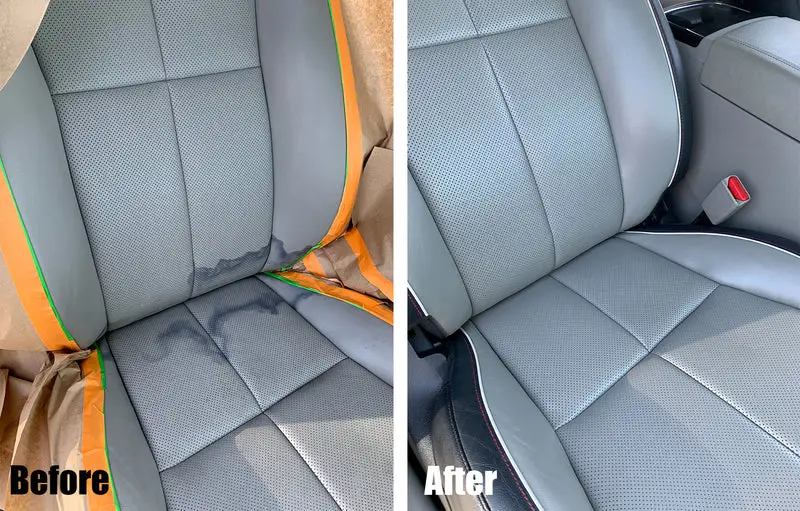
To use: mix one part rubbing alcohol with one part water and apply directly to the stained area. Let sit for up to 30 minutes and then rinse with cold water before laundering as usual.
4. Use a Hair Dryer (Optional)
If you are having trouble getting the glue off, you can also try using a hair dryer. Heat up the affected area for about 10-15 seconds and then use a plastic card or butter knife to scrape away any remaining bits of glue. Keep in mind that this method should only be used as a last resort as it can easily damage your leather car seat.
Now that you have successfully scrapped away the dried adhesive, it’s important to follow up with a specialized cleaning and conditioning treatment for leather surfaces. This step will contribute not only to restoring your car seat’s original colour and sheen but also protecting if from further stains or damage in the future.
5. Let Your Car Leather Seats Dry
Once you’ve followed all of the above steps and have gotten rid of any residual glue, it’s important to let your car seats dry completely. This will help ensure that no further damage is done to the leather surface.
Alternatively, you can use a fan or dehumidifier on low speed in order to speed up the process. Make sure not to leave your car in direct sunlight as this could cause discoloration or fading of the leather material over time.
Important Things to Look Out for When Removing Glue from Leather Car Seats
- Always use gentle pressure when cleaning the leather surface and take care not to damage the material.
- Use appropriate cleaning products specific for leather surfaces in order to achieve the best results.
- Make sure that you are using plastic wrap or a hair dryer as a last resort, as too much heat can easily cause damage to your car seat.
- Avoid leaving your car seat in direct sunlight as this could lead to discoloration or fading of the material over time.
- Once you’ve removed all of the glue, let the area dry completely before applying any cleaner or conditioner. This will help ensure that no further damage is done to your leather car seat. [3]
FAQ
How do you remove superglue from leather without acetone?
It is possible to remove superglue from leather without using acetone. One of the best ways to do this is by using an adhesive remover that does not contain harsh chemicals and is safe for leather surfaces. You can purchase adhesive removers at most home improvement stores or online. Before applying the remover, make sure to test it on a small area of the leather item first.
First, use a craft knife or razor blade to scrape away as much of the glue as possible. Then apply some of the adhesive remover onto a cloth and dab it onto the remaining glue. Allow it to sit for several minutes before wiping away with a damp cloth.
Does acetone damage leather?
No, acetone does not damage leather. In fact, it can be used to restore the color and suppleness of leather goods that have faded or become dried out over time.
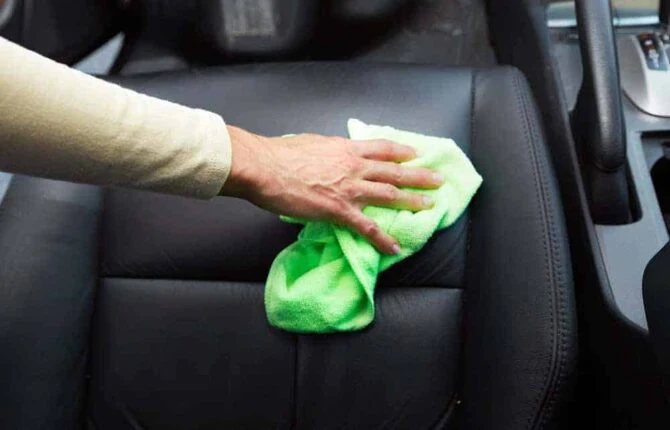
Acetone may cause discoloration if left on too long or if applied in excess, so it should always be tested on a small area first. When properly applied in small amounts with a clean cloth, acetone can help restore lost luster and shine to leathers such as shoes, bags, jackets, and more.
Additionally, it is also effective at removing certain types of stains from leather goods. Be sure to follow label instructions when using any cleaning product on leather goods. [4]
Can you use 70% isopropyl alcohol to clean leather?
No, isopropyl alcohol should not be used to clean leather. Leather cleaning products are specifically designed to gently remove dirt and oil without damaging the delicate fibers of the material. Using isopropyl alcohol or any other harsh chemical could strip away natural oils, damage the leather’s finish, and cause lasting discoloration. It’s best to stick with a proven leather cleaner for this job. When in doubt, always consult the manufacturer’s instructions for care advice.
If you need a quick spot-cleaning solution on leather surfaces like furniture or shoes, use a damp cloth and some mild soap such as dish detergent mixed with warm water. Gently wipe off any grime before wiping dry with a clean cloth. If this does not work, then it may be best to call a professional leather cleaner as using the wrong product or technique could damage your leather.
Is olive oil good for leather?
Olive oil can help keep leather surfaces soft and supple. However, it cannot replace the need for proper care and cleaning of leather. To clean dirt and debris from leather items, use a damp cloth or brush to remove any surface-level dirt. After that, apply a small amount of olive oil to the leather item using a lint-free cloth. This will help protect the item from further damage due to external elements.
What is the best homemade leather cleaner?
The best homemade leather cleaner is a mixture of white vinegar, olive oil, and water. To make the cleaner, mix equal parts of each ingredient in a container and dip a soft cloth into the solution. Gently rub the cloth over the leather item to clean it. Once finished, take another clean cloth dampened with just water and wipe down the entire piece of leather to remove any remaining residue.
Allow the leather item to dry naturally before applying any conditioner or other treatment products. [5]
Useful Video: Remove Glue From Leather
Conclusion
Having a clean car is essential for many reasons, and taking care of your leather car seats is key to keeping it looking and feeling its best. While glue can be very difficult to remove from delicate leather furniture, by following the few simple steps outlined in this blog post you can easily eliminate any sticky mess and restore the beauty of your car’s interior.
Whether you’re trying to get rid of a stubborn adhesive label or something else, these tips are sure to save you time and hassle in sprucing up your car’s interior. So take a deep breath, grab your supplies, and tackle that unsightly glue with confidence! With a little help from us, you’ll have beautiful and restored leather car seats in no time!
References
- https://www.leatherskill.com/how-to-remove-glue-from-leather-car-seats/
- https://leatherek.com/how-to-remove-glue-residue-from-leather/
- https://autoguidehub.com/how-to-remove-sticky-residue-from-leather-car-seat/
- https://www.fibrenew.com/blog/frequently-recommended-leather-remedies-that-ruin-leather/
- https://www.hgtv.com/lifestyle/clean-and-organize/how-to-clean-and-protect-leather

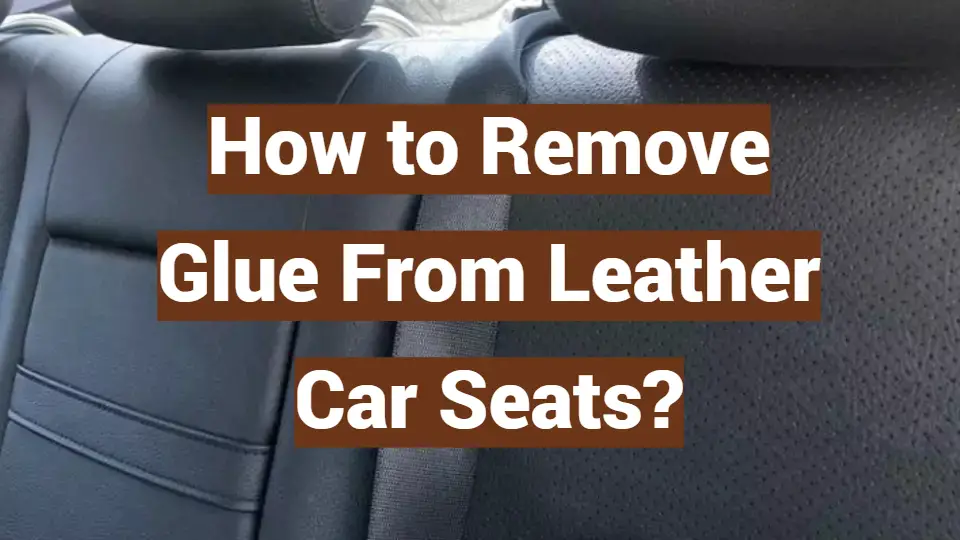

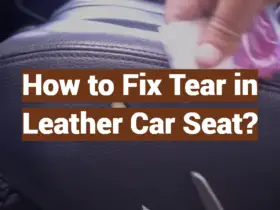



Leave a Reply